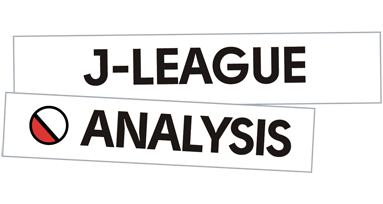During the 2019 J1 League season, it would be fair to say that Shimizu S-Pulse had a fairly forgettable year as a final total of 39 points saw them finish 12th, three points above the relegation play-off spot. Their opening league game of the 2020 season, too, was disappointing for S-Pa as they crumbled to a 3-1 defeat against last season’s highflyers FC Tokyo.
However, it was not all despair for Peter Cklamovski’s side as there were perhaps green shoots that would suggest this calendar year may be more memorable for the club once the season resumes. While Shimizu S-Pulse did not nearly have enough potency in front of goal, statistically they did control the game and that may bode well for the remainder of 2020.
So, this tactical analysis will dissect some of the key tactics which were on display at the IAI Stadium Nihondaira in the opening game of the season which led to this control. The scout report will also use analysis to suggest how these tactics may impact the remainder of the season.
Using a double pivot
In their game with FC Tokyo, one tactic that was evident right the way through the clash was the side’s use of a double pivot. Cklamovski deployed S-Pa in a 4-2-3-1 formation for their first game of the season, which lent itself perfectly to the tactic. This allowed Shimizu S-Pulse to play out from the back and also control much of the ball.

In this annotation, the double pivot role can be seen. When playing out from the back, this same pattern of play would often occur as the two midfielders – Keita Nakamura and Yasufumi Nishimura – would drop deep to pick up possession from the defence while the two full-backs would push higher and wider.
This tactic ensured that, following goal-kicks, the centre-back in possession always had an out ball and have at least two passing options – as marked by the white arrows. This led to the home side dominating the passing statistics, making 459 completed passes, far higher FC Tokyo’s 218. It also allowed S-Pa to retain and control possession, with Cklamovski’s outfit enjoying 63% of the possession.

As can be seen again here later in the game, Shimizu S-Pulse often used the same pattern of play against FC Tokyo. Alongside a strong base to play through the thirds, control of possession, and passing, this also led Nakamura and Nishimura to complete more passes than any other players on the pitch – the former with 80 and the latter with 56.
This was a positive tactic for the home side in the opening game of the season and allowed them to have a solid base; if coupled with more nous in attack and greater defensive awareness – which will be discussed later in the piece – it is a tactic which could prove pivotal throughout the season.
High press
Another positive feature of S-Pa’s tactics was their high press which forced the Tokyo club to stop playing out from the back early in the game. On the few occasions FC Tokyo did not go long from goal-kicks, or when their defenders were in possession, Shimizu S-Pulse would press high to win back possession high up the pitch or force the opposition into a mistake.

As can be seen here, five minutes into the game, S-Pa make their pressing intentions clear. This is the first time FC Tokyo played out from the back and immediately the press is initiated by striker Teerasil Dangda, who quickly closes the ball holder down after he has received possession from the goalkeeper.
Dangda was always the forward-most point of the press and depending on which side of the pitch the away side had possession, a right-angle triangle structure was taken up including the attacking midfielder and the winger on that side of the pitch in the 4-2-3-1. The two supporting players would take up positions to block passing lanes to force the defender to play the ball long.

After Shimizu S-Pulse made their high-pressing tactic clear from the outset, FC Tokyo played it long from goal-kicks almost every time. Here, possession has fallen back to the defence after a long punt forward and again S-Pa immediately press high. Dangda presses the ball while closing the option to pass across and the attacking midfielder and right-winger behind him close the centre-back’s passing options to his left.
Again, this was a positive tactic that was perhaps curtailed in its effectiveness due to the fact FC Tokyo astutely ditched any attempt to play out from the back after S-Pa’s intentions were made clear. Against sides who are perhaps more stubborn this season, Cklamovski’s side may find more success in trying to win possession high up the pitch.
Use of through balls
One area of Shimizu S-Pulse’s tactics in the opening game of the season which perhaps could have been a strength but went slightly underused is through balls. It perhaps seemed like a little lack of cohesion was present in the front line as attackers looked to make the runs, however, the through passes often went unattempted and when one was made – S-Pa scored.

As can be seen here, early in the game with Shimizu S-Pulse on the attack and the ball wide right, a gap has opened up in the away side’s defensive line. Yusuke Goto has spotted an opportunity and clearly points to receive a through pass and be put through on goal. However, the winger opts for an alternative route. Dispite more opportunities like this presenting themselves, only three through balls were attempted, two of which were successful.

Here is an annotation of one of the two successful through passes which helped open the scoring for the home side. With the gap in the defensive line having opened, Dangda has positioned his body on the turn to latch onto a through pass which does arrive on this occasion as it had not done previously. The striker latches onto the ball and he is able to slot home the match’s opener.
While it is debatable if this was a tactic of the home side’s that ended up being shunned on multiple occasions for what were perceived as better options in the different instances, perhaps the final result may have been different if S-Pa were a little more penetrative through FC Tokyo’s defensive line. Therefore, this may be an area which Cklamovski looks to exploit later in the season.
Lack of defensive awareness
Looking at passing, possession and even attacking statistics alone, one would guess that the home side was victorious in the opening match of the season. However, it was their defensive awareness in individual instances that doomed the side to a 3-1 defeat.

Here, in the build-up to FC Tokyo’s equaliser, Yugo Tatsuta shows a dangerous lack of defensive awareness as he gives away the first penalty of two in the afternoon. With Leandro attacking down the left-hand side and shielding the ball with his body, Tatsuta should allow Valdo to come across the two players as he is doing to easily sweep up the ball. However, the centre-back lunges in and bundles over the attacker without touching the ball.

Here, with the scores tied, Shimizu S-Pulse show another dangerous lack of defensive awareness which allows the away side to take the lead in the match. With Tatsuta tracking the man in possession a large gap opens behind him, Adailton then makes a darting run into that opening space and neither Valdo nor Ryo Okui tracks his run and the attacker is left with a free shot at goal following a squared pass.
As stated, statistically Cklamovski’s side was dominant in the opening game of the season, however, it was this defensive frailty which meant that controlling the game was to no avail. Of course, it was also coupled with a lack of attacking nous, however, this should be a major area to work on if S-Pa are to enjoy any kind of positive season.
Conclusion
As stated in the introduction of this team analysis, while Shimizu S-Pulse were by no means the finished article in the opening game of the season, there were certainly positive signs which could be considered green shoots.
The impact of S-Pa’s double pivot was incredibly evident, their high press was a positive tactic which may perform better against stubborn opposition and through balls could perhaps be an area for the side to focus on over the remainder of the season.
However, it may end up being likely that all of those are irrelevant if Peter Cklamovski cannot improve his side’s defensive awareness.
This tactical analysis has dissected some of the key tactics which showed signs of positivity in Shimizu S-Pulse’s opening game of the 2020 J1 League season. The scout report has also used analysis to explain how these tactics could be effective whilst also highlighting a weakness to improve upon.






